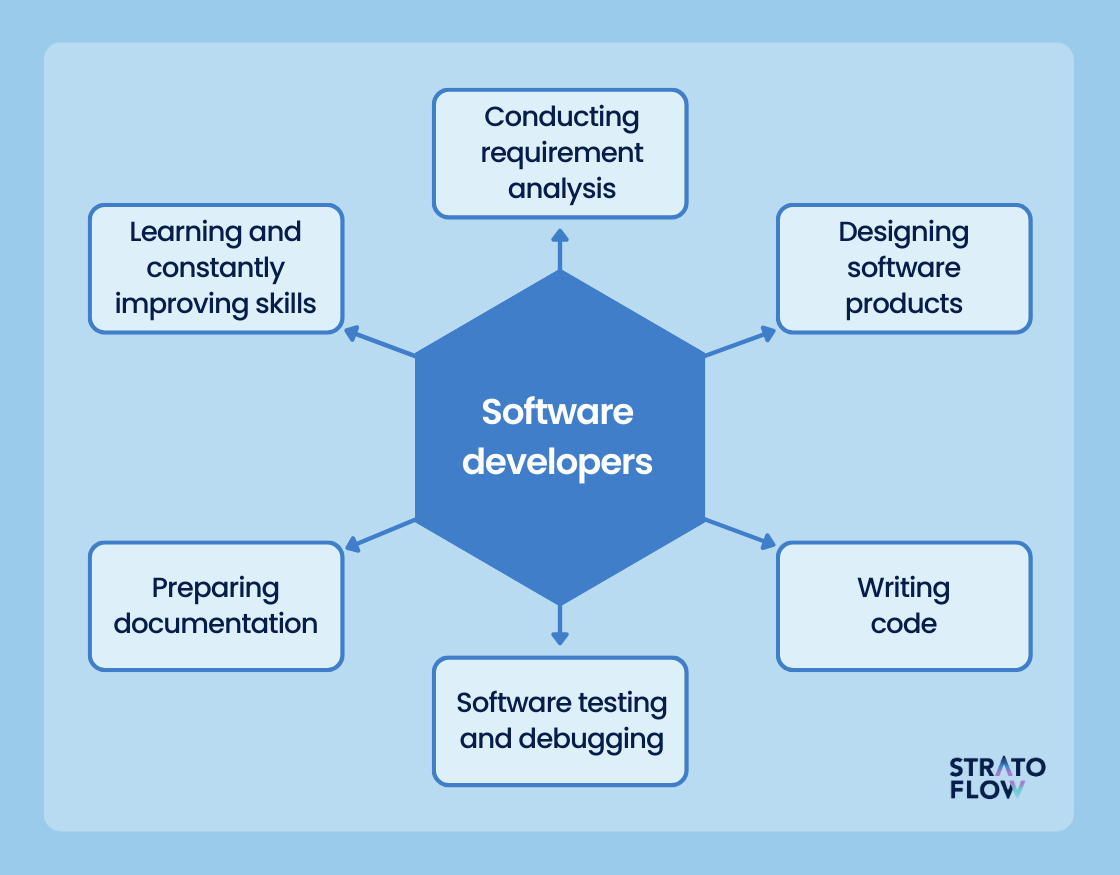Structure Success with a Dedicated Development Team for Your Service Demands
Wiki Article
Dedicated Developers vs. In-House Teams: Which Is Right for You?
The decision between utilizing committed developers and maintaining an internal team is a significant one that can impact the trajectory of your tasks and overall organization strategy. Alternatively, internal teams add to a cohesive business culture and a nuanced understanding of long-term objectives.Understanding Committed Programmers
The growing demand for specialized abilities in the tech market has led to the development of committed developers as a sensible option for lots of companies. These experts are generally gotten on a task basis, allowing firms to leverage particular proficiency without the long-term commitment connected with full-time hires. Dedicated developers are frequently embedded within a client's team, giving flexibility and scalability to fulfill task needs.This model allows organizations to access a worldwide ability swimming pool, which is especially beneficial in a quickly evolving technological landscape. Devoted programmers can be sourced from numerous geographical places, ensuring that business can discover the right ability at competitive prices. They usually bring a wide range of experience and knowledge, having serviced varied tasks across various markets.
Additionally, specialized designers can concentrate exclusively on the tasks available, enhancing productivity and efficiency. They are equipped to incorporate flawlessly into existing operations, teaming up closely with in-house groups to accomplish task objectives. This approach not just minimizes the worry of recruitment and training but likewise enables companies to continue to be active, adapting rapidly to transforming market needs and technical improvements.
Benefits of In-House Teams

Moreover, internal teams often tend to have a deeper understanding of the firm's objective, worths, and goals. This positioning can enhance employee involvement and motivation, as employee feel more attached to their work and the company's success. Furthermore, having a devoted internal group permits much better alignment of goals and techniques, as these participants are regularly concentrated on the firm's top priorities.
Internal groups additionally assist in quicker decision-making procedures, as they can react more quickly to changes and obstacles. The recognized partnerships and knowledge with company protocols permit structured process and minimized miscommunication. Inevitably, the combination of a natural culture, placement with organizational goals, and reliable communication makes in-house teams an important possession for lots of companies, particularly those aiming to cultivate lasting growth and technology.
Price Considerations
When evaluating expense factors to consider, both committed programmers and internal teams existing distinct economic implications for organizations. Involving committed designers normally entails a pay-per-project or hourly price design, which can be cost-efficient for companies with changing project needs. This approach enables flexibility in scaling resources up or Continued down, guaranteeing that firms only spend for the solutions they need.In comparison, internal teams require dealt with costs, including salaries, advantages, and overhead expenses such as workplace and equipment. While this version supplies better control and instant schedule of sources, it may lead to higher lasting expenditures, specifically if the work does not warrant a full-time team.
In addition, firms ought to take into consideration the hidden prices related to recruitment and training of internal employees, which can further strain budgets. In many cases, the moment and sources invested on managing an internal team can diminish the company's core business objectives.

Task Management and Adaptability
Project management and versatility are important variables that affect the selection in between in-house groups android programming and devoted designers. Committed teams typically have actually developed processes for handling tasks efficiently, leveraging particular methods like Agile or Scrum, which facilitate repetitive progress and flexibility.
Eventually, the choice between committed programmers and internal teams hinges on the desired degree of adaptability and the specific task administration requirements. Business need to review their operational dynamics, task complexity, and source schedule to figure out which choice lines up best with their strategic objectives.
Making the Right Selection
Picking the appropriate development technique-- in-house groups or devoted designers-- needs a cautious assessment of various elements that straighten with a firm's tactical goals. Conversely, in-house groups can offer better continuity and assimilation with existing workers.Following, evaluate your spending plan. Dedicated developers frequently offer an affordable option for short-term projects, while internal groups may sustain higher long-term expenses due to incomes, benefits, and expenses costs. Analyze the level of control and cooperation desired; in-house teams normally cultivate stronger communication and alignment with company society.
Furthermore, take into consideration the moment structure. If prompt outcomes are necessary, committed programmers can be onboarded rapidly, whereas building an internal group requires time for employment and training. Finally, weigh the long-term vision of your organization. Spending in an in-house group may generate better returns over time if continuous growth is important. Inevitably, the choice depends upon an extensive evaluation of these aspects, making certain placement with my review here your firm's functional needs and overall goals.
Verdict
In conclusion, the choice between in-house groups and dedicated designers hinges on job requirements and organizational purposes. Devoted developers give adaptability and specific competence, making them suitable for temporary efforts. Conversely, internal teams grow a cohesive culture and deeper positioning with long-lasting objectives. Mindful examination of budget restraints, task timelines, and desired control degrees is important for determining one of the most appropriate approach, guaranteeing placement with calculated concerns and functional performance.The decision in between making use of dedicated designers and preserving an internal group is a considerable one that can affect the trajectory of your jobs and general company technique.Job monitoring and versatility are vital aspects that affect the option in between dedicated designers and in-house groups. hire dedicated developers.In comparison, in-house teams may stand out in preserving a consistent job administration framework due to their experience with the company's culture and long-lasting goals. Dedicated designers commonly present an economical option for short-term projects, while internal groups may sustain higher lasting expenses due to wages, advantages, and overhead prices.In conclusion, the decision in between internal groups and dedicated programmers hinges on task demands and business objectives
Report this wiki page